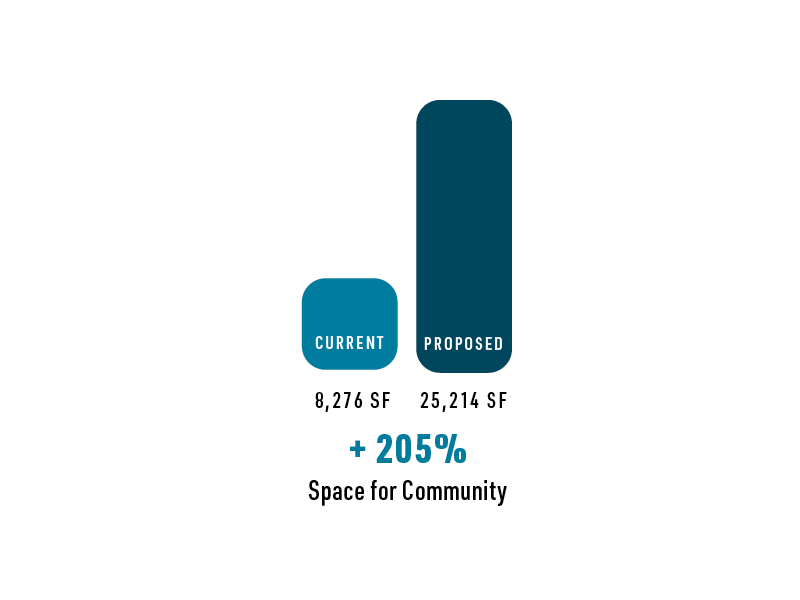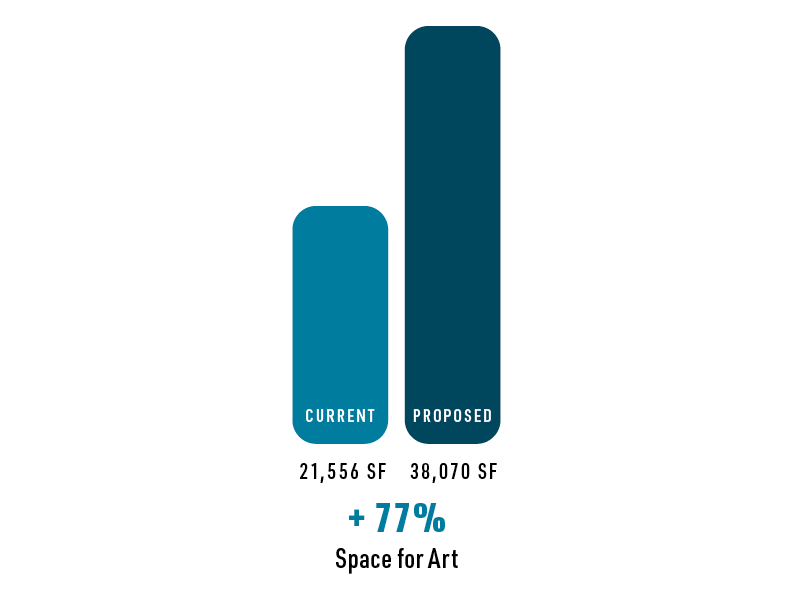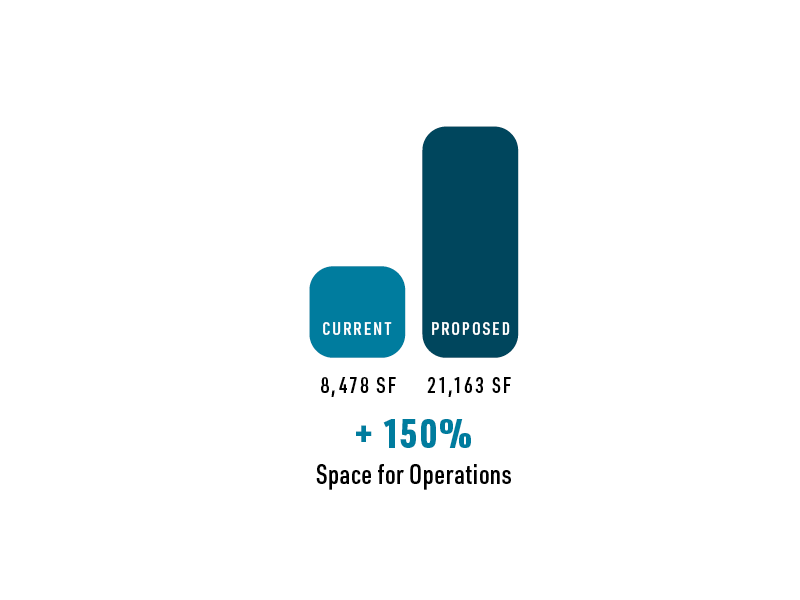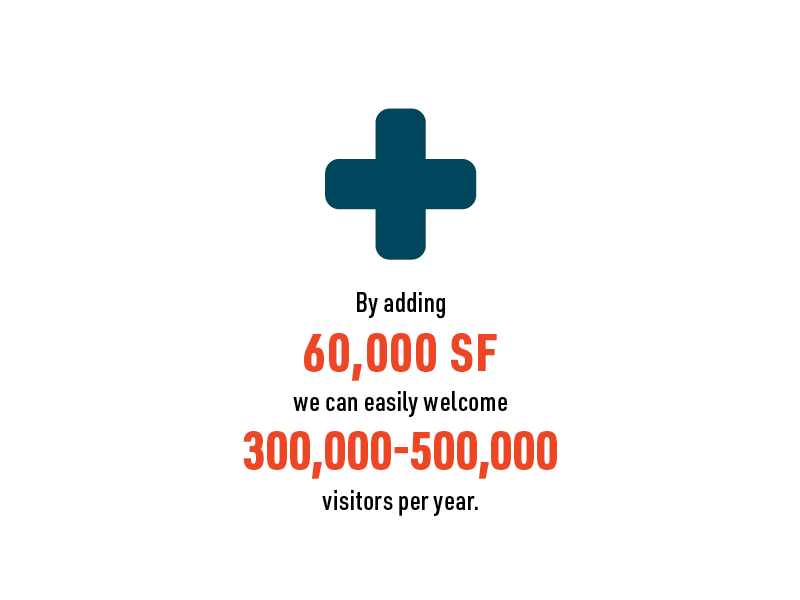The PMA Blueprint
Building a landmark for the future
This paradigm shift enables the PMA to be a leader of our region, a keystone for our communities, and a catalyst for our economy.
In a region traditionally renowned for its natural beauty and cuisine, the PMA has a new vision defined by arts, culture, equity, and sustainability. To get there will require innovative thinking that goes “beyond the brick,” and into the very nature of what a museum can be.
We believe the museum can transcend convention and redefine the quintessential Maine experience. We understand that the PMA, through investment in art and the facilities that bring that art to the public, can initiate a transformative new chapter for our region, one defined by growth and prosperity. And we know the time is now to embark on this profound and permanent shift forward.
The PMA’s impact is greatest when we open doors for audience engagement and identify opportunities to grow our collection and unify our campus.
The Portland Museum of Art is defined by three pillars: community, collection, and campus. Working in tandem, these pillars have been the foundation of every milestone of the museum’s incredible history. From the museum’s founding in 1882 by artists and community leaders, to Charles Shipman Payson’s gift of 17 works by Winslow Homer, to the opening of its Payson building one hundred years later, and to its present-day status as a cultural leader, the PMA’s success has been grounded by one of these three pillars.
Now, sparked by the current growth and diversification of the collection, record attendance and community feedback, and new opportunities to expand and unify its campus, the Portland Museum of Art stands ready to embark on what will be its most ambitious and pioneering era yet. This era will be defined by the additions of new, renowned collections, the development of iconic buildings in which to present them, and an innovative relationship with the communities we serve.
LEVER Architecture Selected To Lead Design Team For Campus Expansion and Unification
“This is one of the most significant moments in the PMA’s 140-year history. LEVER, and the team they have assembled, have demonstrated that they care deeply about our region’s future, our unique arts culture, and the needs of our communities. They share our values of courage, equity, service, sustainability, and trust, and we can’t wait to work with LEVER and our communities to imagine Maine’s next great landmark.” - Mark Bessire, the Judy and Leonard Lauder Director of the Portland Museum of Art.
In 2022 the PMA collaborated with The Maine Center for Business and Economic Research at The University of Maine (USM) to fully understand the museum’s existing and potential economic impact. The following is a summary of the report. Read the full report here.
Quality of life makes a place worth calling home.
The PMA Blueprint concept designed by LEVER Architecture will create a new hub for Maine’s communities and a landmark for the region, attracting millions of people to downtown Portland and driving the economy.
Recent population growth in Maine is ranked among the fastest in the nation.
From 2020 to 2021 Maine’s population increased by nearly 10,000 or 0.7%, driven in part by an increase in remote work and people seeking locations that allow for work-life balance and access to outdoor recreation. A growing, more diverse, and younger population in Maine is encouraging, as the state has the oldest population in the US by median age (44.7 years) and by percent of the population age 65+ (21.7%). Maine’s aging demographic and resulting labor market conditions are a longstanding challenge for the state that can be positively impacted by continuing to attract new Mainers.
Investments that contribute to and improve quality of life can be more effective economic development tools than traditional strategies such as business tax incentives. Community amenities including recreational opportunities and cultural activities may be larger contributors to a healthy local economy than more narrowly focused “business-friendly” measures. A range of easily accessible open spaces and public gathering spots that promote community connections, restaurants, jobs, and safety have proven to attract—and retain—newcomers to an area to live, work, and play.
A major goal of The PMA Blueprint is to be a catalyst for the economy.
By improving accessibility, inclusivity, and capacity, the PMA will demonstrate that the arts can drive and support Maine’s economic Future.
The PMA stands ready to double its economic impact through jobs, sales, labor income, and more. Here’s how:
Jobs Created & Supported
Labor Income Generated (Millions)
Output/Sales (Millions)
Taxes Generated (Millions)
Annual Attendance
Operating Budget Spending (Millions)
Direct Tourism Spending (Millions)
Five-Year Construction Impacts in the Maine Economy
USM’s analysis also estimated the economic impact from the capital expenditures on the proposed PMA Blueprint construction project. Between 2023 through 2027, the PMA estimates that it will cumulatively spend $52.1 million to construct the new 60,000 sq ft. building. Including direct, indirect, and induced spending, the total impacts of the PMA’s capital investment on new construction, include an estimated:
66 - 79 construction-related jobs per year
$17.4 - $20.8 million in associated labor income
$49.5 - $59.4 million in total output (sales)
* Indirect and induced spending are the ripple effects of multiple rounds of spending in the economy. In simple terms, induced spending refers to the impact of increased consumer spending, while indirect spending refers to the impact of increased business investment.
Review the materials we submitted to Portland’s Historic Preservation Board to re-classify 142 Free Street’s 2009 “contributing” designation and enable the development of a new museum building.
142 Free Street Over Time
Reflecting on these cycles is critical to understanding the unique and promising moment the PMA is embracing.
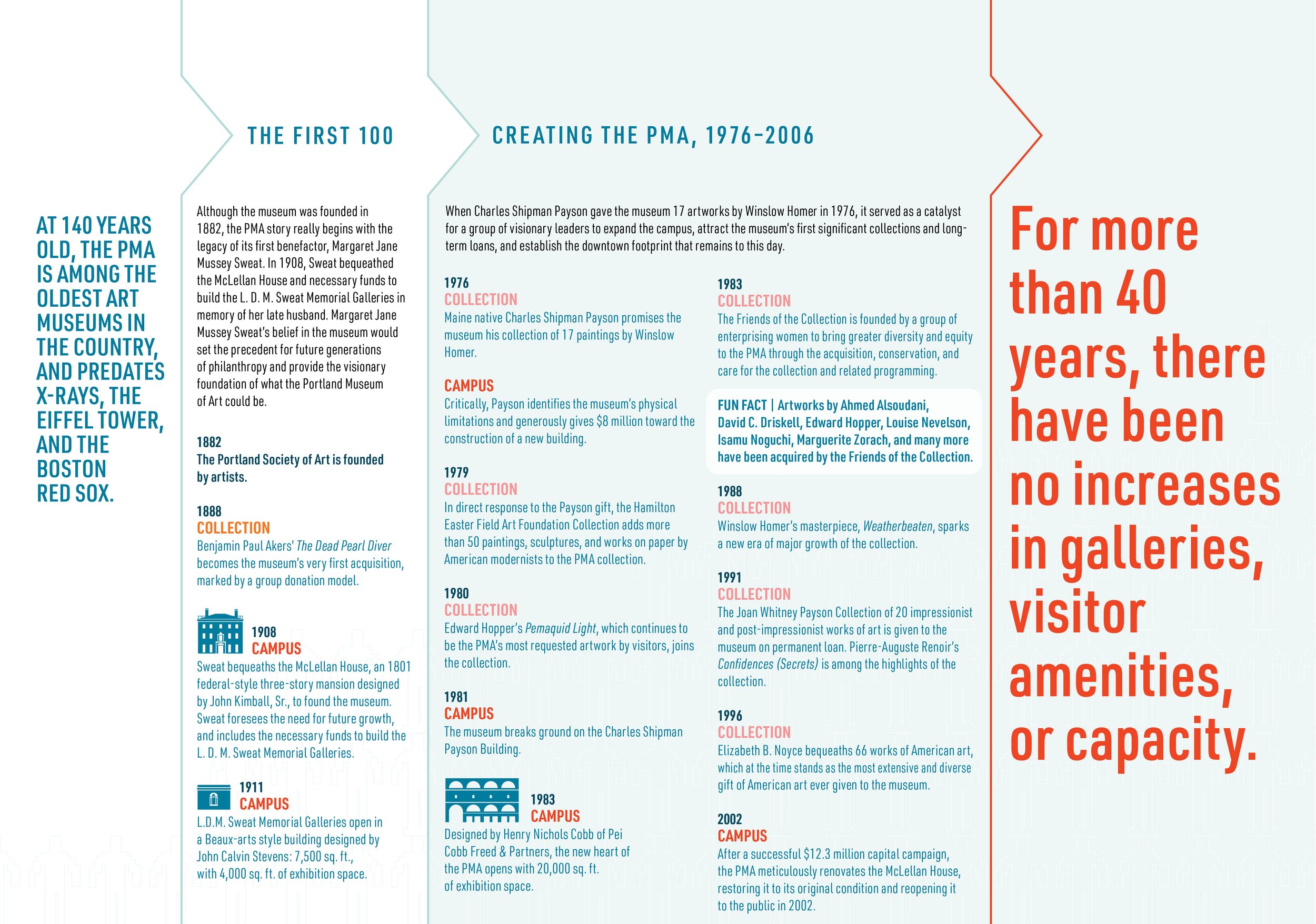

“It’s time to envision the next great era in PMA history, one sparked through new, world-famous collections and an architecturally innovative and unified campus that serves as an epicenter for conversation, connection, and community.”
— MARK H.C. BESSIRE, JUDY AND LEONARD LAUDER DIRECTOR
Our dedication to the collection has never been stronger.
Pierre-Auguste Renoir (France, 1841–1919), Confidences (Secrets), circa 1874, oil on canvas, 32 x 23 3/4 inches. The Joan Whitney Payson Collection at the Portland Museum of Art, Maine. Gift of John Whitney Payson, 1991.62. Image courtesy of Pillar Digital Imaging
We’re committed to highlighting the strengths of our existing collection and the long-term loans that have attracted local and global audiences for decades. Simultaneously, we’re expanding the collection dramatically through additions by artists such as Jeffrey Gibson, Daniel Minter, Tim Rollins & K.O.S., Clifford Ross, Theresa Secord, and Kara Walker. Lastly, we’re reinforcing holdings of landmark works by Maine artists, including Lois Dodd, David Driskell, Winslow Homer, John Marin, and Andrew Wyeth.
The museum is now about to move light-years forward, with the addition of several major, internationally renowned and incredibly valuable collections that will transform everything. This expansion of the collection is the most extensive and diverse in the institution’s history, and immediately centers the PMA as one of the most important museums in the Northeast.
But the opportunity and challenge ahead is clear: to present these collections at all, let alone meaningfully and in line with our values, we need to increase capacity to provide welcoming spaces for all through the growth and unification of our campus.
Alex Katz Foundation Gifts
Over the last decade, the Alex Katz Foundation has generously provided the PMA with a collection of nationally and internationally renowned artworks by Katherine Bradford, Emily Brown, Lois Dodd, Misaki Kawai, Chris Martin, Julian Opie, and more. The foundation has contributed more than 45 artworks to the PMA collection since 2011.
Judy Glickman Lauder Photography Collection
Anchored by works from some of the most beloved and influential photographers of the 20th century, including Berenice Abbott, Diane Arbus, Richard Avedon, Margaret Bourke-White, Danny Lyon, Sally Mann, Gordon Parks, and James Van Der Zee, the collection will become the center of a photographic collection at the Portland Museum of Art that will thrill audiences from around the world. The collection also includes photographs by critical contributors to the medium’s history, such as Irving Bennett Ellis, Lotte Jacobi, Alma Lavenson, Ben Shahn, Graciela Iturbide, and Glickman Lauder, the collector herself.
Barbara Goodbody Collection
Over the last half decade, the PMA has worked to prioritize artworks and perspectives from our Wabanaki communities, presenting contemporary artworks in our Biennial series, featuring leaders in our marquee public programs, and partnering with artists and community members on inclusive, direct, and honest didactic materials in order to dismantle systemic racism and art historical blind spots. Wabanaki baskets, given generously by Barbara Goodbody in 2021, include stunning works by David Moses Bridges, Martin Dana, Jeremy Frey, Theresa Secord, Sarah Sockbeson, Geo Soctomah Neptune, and more.
Walter B. and Marcia F. Goldfarb Collection
Assembled by PMA Trustee and patron Dr. Walter Goldfarb and his wife, Marcia, the Goldfarb collection focuses on three primary categories of painting: ship portraits, landscapes in the tradition of the Hudson River School, and trompe l’oeil still life. Featured artists include Sanford R. Gifford, John Haberle, William Michael Harnett, and John Frederick Peto. The Goldfarb Collection offers strong resonance with existing PMA works by Charles Codman, Fitz Henry Lane, Eastman Johnson, and others, providing visitors a coherent narrative of 19th-century American art.
Richard Estes Collection
The Richard Estes Collection and Archive has been promised to the Portland Museum of Art. This transformational collection contains paintings and extensive archival material, forming a significant body of work that will provide breadth to the museum’s collection of American art. The Richard Estes Collection will help chart the reinvigoration of realist and figurative American painting in the decades after World War II, when numerous artists of Estes’ generation were seeking a fresh approach to painting. Many of these artists eventually found Maine, or places like Maine—rural environments where their interest in the natural world became intertwined with their artistic visions.
Berger Collection Educational Trust
A major gift of works by American icon Winslow Homer strengthens the Portland Museum of Art’s position as one of the leading institutions in the world to experience the art and legacy of Winslow Homer. Highlights of the gift from the Berger Collection Educational Trust include paintings Returning from the Spring, 1874, and Young Farmers (Study for Weaning the Calf), 1873-1874, as well as nearly a dozen other works made by Homer during his career.
David and Eva Bradford Collection
German expressionist works that powerfully blend issues of history, politics, art, and national identity, provoking questions about who we are and what we value in ways that are as pertinent today as they were a century ago. The works, gifts to the PMA from David and Eva Bradford, add context to the social and artistic expression of the era and are equally probing in their evaluation of German society and national identity. Highlights include works by Max Beckmann, Otto Dix, and Käthe Kollwitz.
The PMA’s success is now our biggest challenge.
In the last two years, our audiences have made it clear that they have big expectations, and we do too. We’ve sustained double-digit increases in attendance for the last half decade, reaching a record high in 2019 with nearly 177,000 visitors. As we look to the future, it’s easy to see how the constraints of our campus will soon hinder our goals and our communities’ needs.
Compared to peer institutions*, the PMA...
* According to the American Association of Museum Directors (AAMD) 2019 report, which represents the most recent data. AAMD did not conduct reports for 2020. Data rounded to nearest fifth.
We Need To Build Up
We are being forced to reduce exhibition size, relocate marquee programs and events, and restrict capacity due to limits of our campus.
In October 2019, the PMA took a big step toward a bold future, purchasing 142 Free Street building directly adjacent to the museum’s Charles Shipman Payson Building. In a rapidly evolving city, this purchase provides the museum with a footprint for future opportunities and enables the PMA to define Portland as a national center for arts and culture.
With the opportunities of 142 Free Street, the development of Congress Square (a major, underdeveloped urban park at the main entrance of the museum) and the domino effects of renewal across our campus at sites like the Payson Building, Spring Street lot, and more, now is the time to unify the campus and thoughtfully plan the museum’s future. We envision our campus as an environmentally sustainable gathering place where a strong artistic vision drives conversation, creativity, and cultural vibrancy.
This investment will embody our Art for All and Sustainability values, with 142 Free Street being the first sustainable and green public building in Portland and just the fourth green public museum building in the country. Planned across a six- or seven-story building, the ground floor is a community gathering space with a gallery, classrooms, and versatile areas for collaborations, partnerships, and communal food sharing. The lower level is a large flexible auditorium, and one floor would be dedicated to housing local nonprofit organizations, which would operate in the building and become crucial to the education and outreach programs of the PMA. One floor would include an all ages Makers Space, classrooms, and a Photography Center. One floor would be dedicated to traveling exhibitions as our current space of 4,500 square feet is too small for us to collaborate with our peer museums; another floor would hold offices. The rooftop would provide a meeting area, restaurant, and a sculpture park as well as an opportunity for earned revenue.
A key component of the new PMA building at 142 Free Street will be home to a photography study center that teaches and inspires our youth, partners with seasoned photographers, and analyzes the historical and contemporary fields of photography. This dedicated space could fully support the field of photography for all generations by creating a new model that is so needed today, as museums struggle with their past. It could be housed on a floor that provides full-service photography, from darkrooms, classrooms, and galleries, to a study center in partnership with other cultural organizations, making it an active and accessible space for all. It could also include a dedicated permanent gallery, with exhibitions changing annually so that visitors to the PMA can build over time their knowledge of the art of photography.
It’s time to create the next great PMA experience, adding a new, iconic, and architecturally significant center to our historic campus. A unified and renewed campus will enhance the mission, welcome visitors from around the corner and across the world, and encourage meaningful connections with artworks, programs, and events.
Join Us.
Beginning today, we can renew, revitalize, and redefine a museum’s role within our society—but we can’t do it alone.
With your partnership and support, we can manifest a model for all museums: one defined by leadership, courage, sustainability, and inclusivity.
The PMA that you will help establish will strengthen our societal fabric and affirm that museums are critical to the health of our communities in all ways. Together, we can realize the true potential of museums for all people.
In The News
We’re committed to connecting the art and ideas inside our walls with the world and people outside of them, and our vision for the museum will demonstrate that the PMA is a different kind of arts institution: one that platforms its communities, promotes its region, and elevates our shared future.
How we got here
Diversity, Equity, Accessibility, and Inclusion (DEAI) Roadmap
Equity Strategic Action Plan (ESAP)
Campus Plan by Simons Architects
Listening Sessions
Staff Workshops
Community Focus Groups
Feasibility Study
Strategic Plan
WHAT’S NEXt
PHASE 1 | 142 Free Street Development
Begins with an Architect Selection Process and culminates with breaking ground on a new building
PHASE 2 | Further Campus Unification
Optimize and integrate existing facilities
PHASE 3 | Land Investment
Spring Street property transformation to serve the future of the PMA and our communities.
Featured Artworks
Architectural rendering of the Payson Building by I. M. Pei & Partners.
Jeffrey Gibson (United States, born 1972), PEOPLE LIKE US, 2018, glass and plastic beads, tin, copper and gold-finished jingles, artificial sinew, quartz crystal, silver-coated copper wire, druzy crystal, nylon thread, nylon fringe, acrylic felt, acrylic paint, repurposed wool blanket, recycled jersey stuffing, rawhide, 60 1/2 x 24 1/2 x 14 inches. Gift of Crewe Foundation and Family, 2019.13. © Courtesy of the artist and Robert Projects, Los Angeles, California; Photo Peter Mauney
Elizabeth Hazan (United States, born 1965), The Forest at 2:00am, 2019, oil on linen, 50 x 47 inches. Gift of the Alex Katz Foundation, 2019.26.2. Image courtesy of Cary Whittier. © Elizabeth Hazan.
Gordon Parks (United States, 1912–2006), American Gothic, Washington, DC, 1942, gelatin silver print, 13 x 10 1/4 inches. Promised Gift from the Judy Glickman Lauder Collection. Image courtesy of Luc Demers. Courtesy of and copyright The Gordon Parks Foundation.
Theresa Secord (Penobscot, born 1958), Trinket basket, 2014, black ash, cedar bark, sweetgrass, dye, 5 1/2 x 4 1/2 x 4 1/2 inches. Gift of Barbara M. Goodbody, 2021.19.12a,b. Image courtesy of Luc Demers. © Theresa Secord.
John Frederick Peto (United States, 1854-1907), Office Board for Christian Faser, 1881, oil on canvas, 20 x 16 inches. Collection of Walter B. and Marcia F. Goldfarb.
Richard Estes (United States, born 1932), Kentucky Fried Chicken, 2007, screenprint, 24 x 16 inches. Private collection. Image courtesy of Luc Demers. © Richard Estes.
Winslow Homer (United States, 1836–1910), Returning from the Spring, 1874,oil on panel, 7 7/8 x 5 3/4 inches, Gift from the Berger Collection Educational Trust in honor of the preservation of the Winslow Homer Studio, 2018.9.1. Image courtesy of Luc Demers.
Ernst Ludwig Kirchner (Germany, 1880-1938), Striding Bathers in the Woods (In der Walde Schreitende Badens), 1910, etching on wove paper, 9 3/4 x 7 3/4 inches. Gift of David and Eva Bradford, 2003.34.2. Image courtesy of Luc Demers
David C. Driskell (United States, 1931–2020), Ghetto Wall #2, 1970, oil, acrylic, and collage on linen, 60 x 50 inches. Museum purchase with support from the Friends of the Collection, including Anonymous (2), Charlton
and Eleanor Ames, Eileen Gillespie and Timothy Fahey, Cyrus Hagge, Patricia Hille Dodd Hagge, Alison and Horace Hildreth, Douglas and Sharyn Howell, Harry W. Konkel, Judy and Leonard Lauder, Marian Hoyt Morgan and Christopher Hawley Corbett, Anne and Vince Oliviero, D. Suzi Osher, Christina F. Petra, Karen and Stuart Watson, Michael and Nina Zilkha, and with support from the Freddie and Regina Homburger Endowment for Acquisitions, and the Emily Eaton Moore and Family Fund for the Collection, 2019.16. © Estate of David C. Driskell. Courtesy DC Moore Gallery, New York



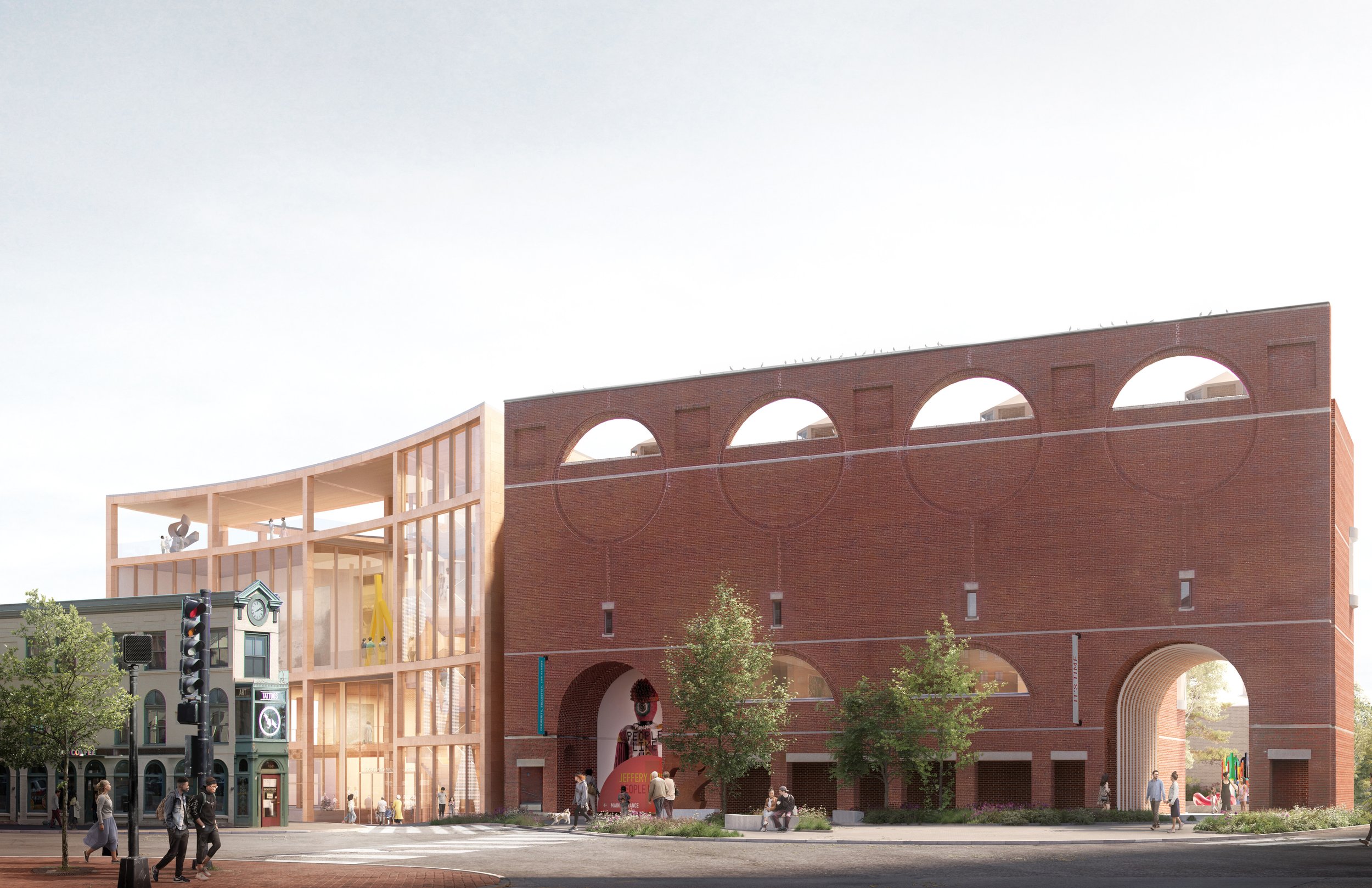

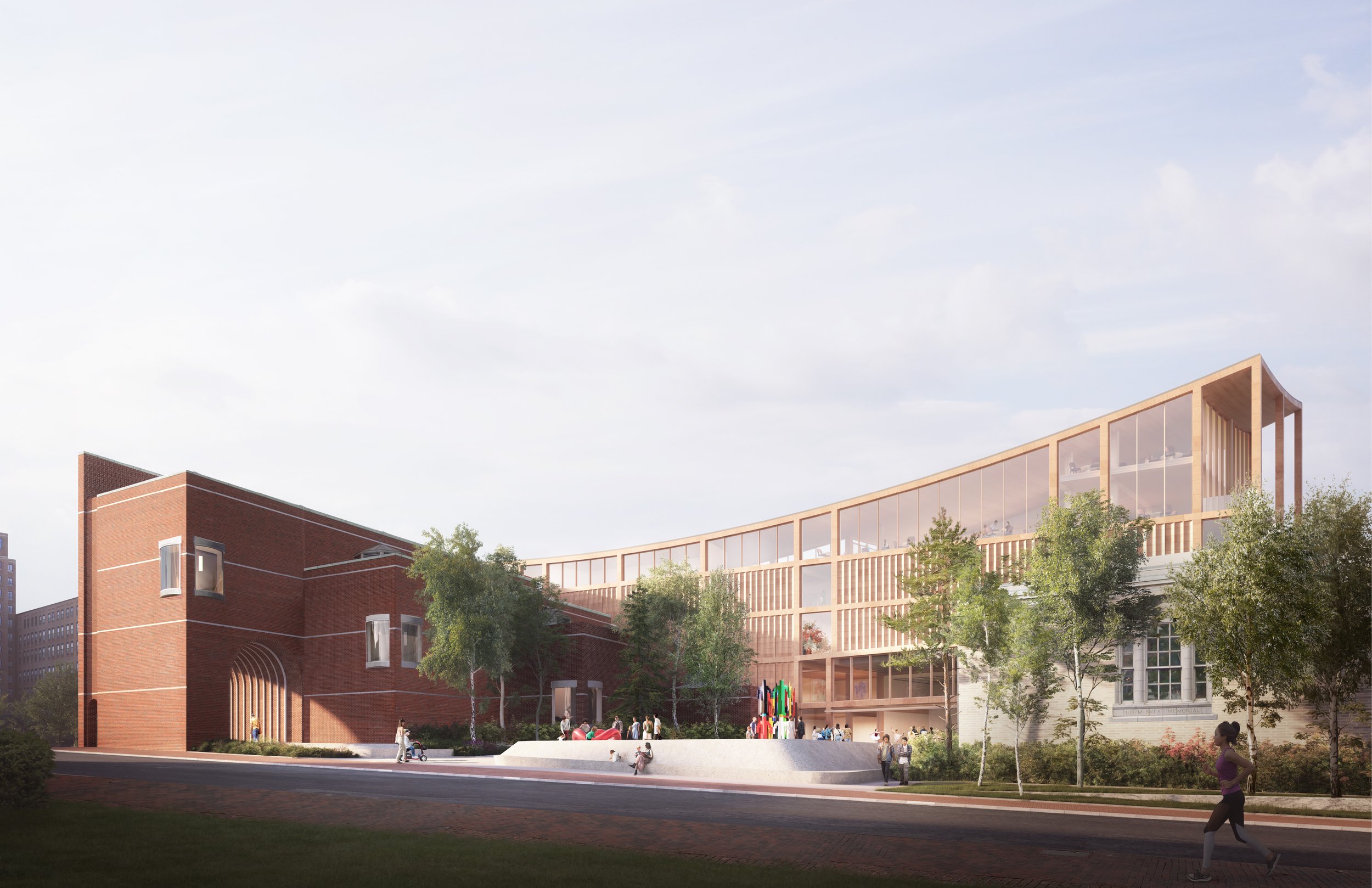

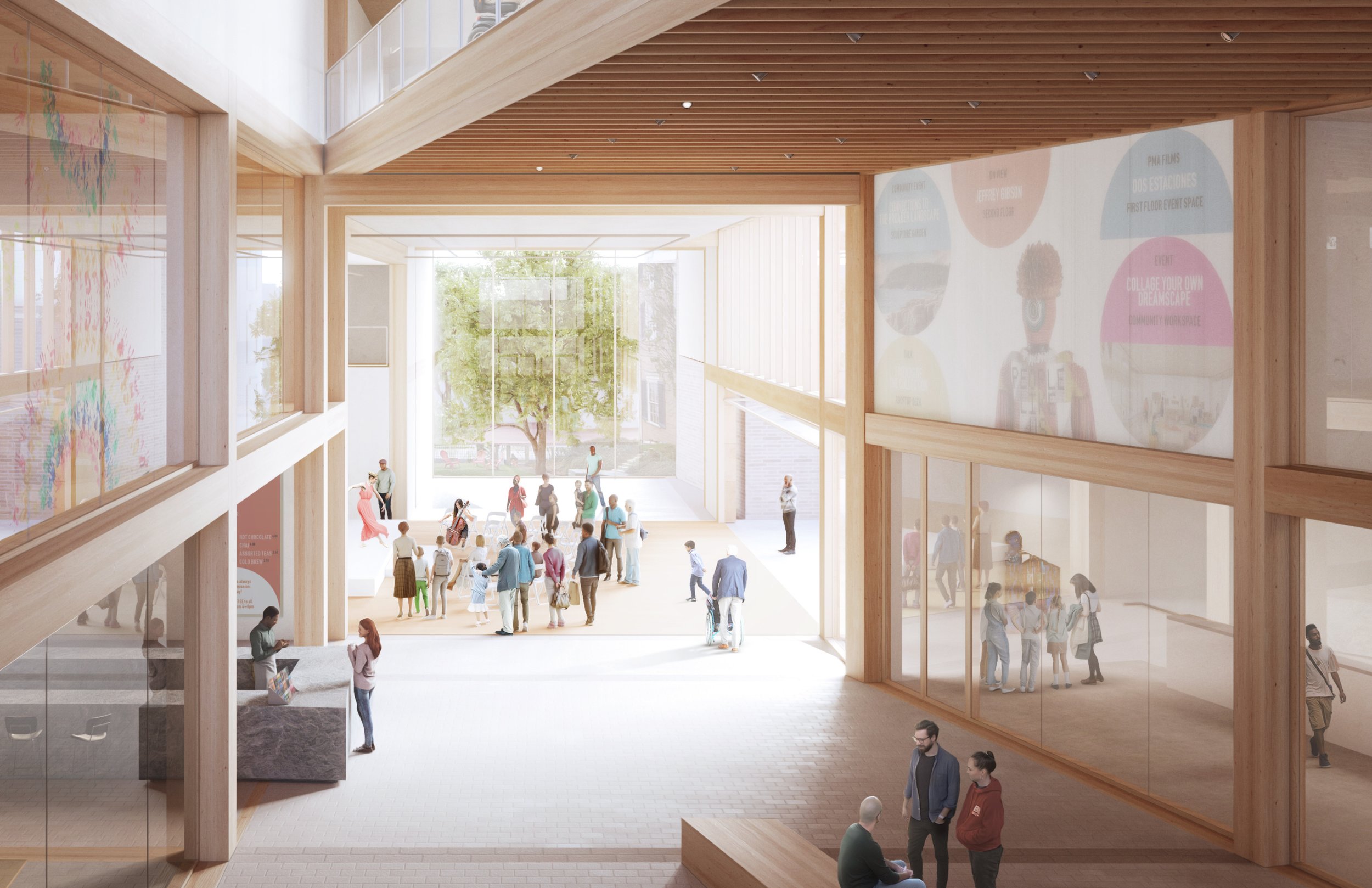
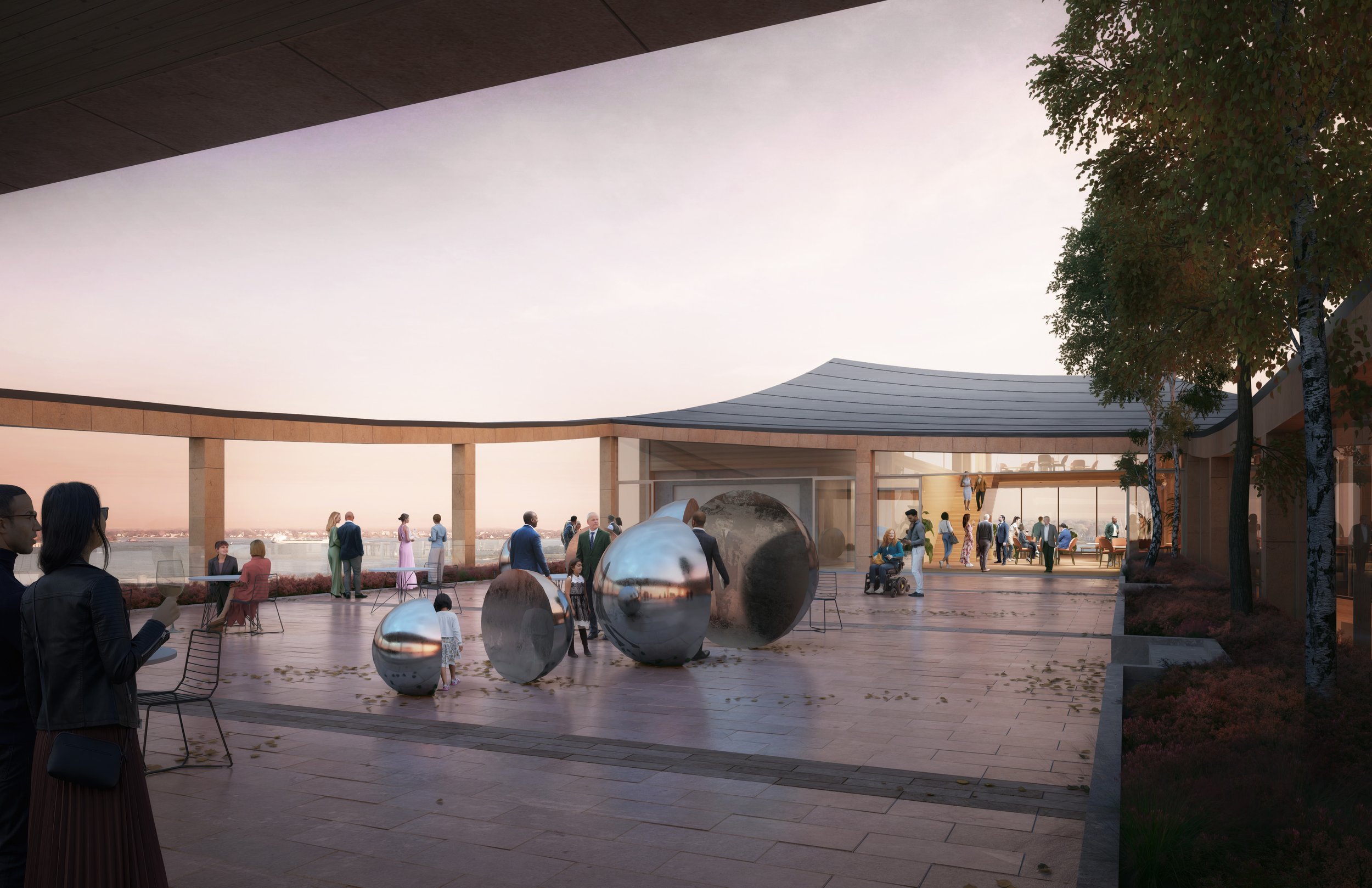



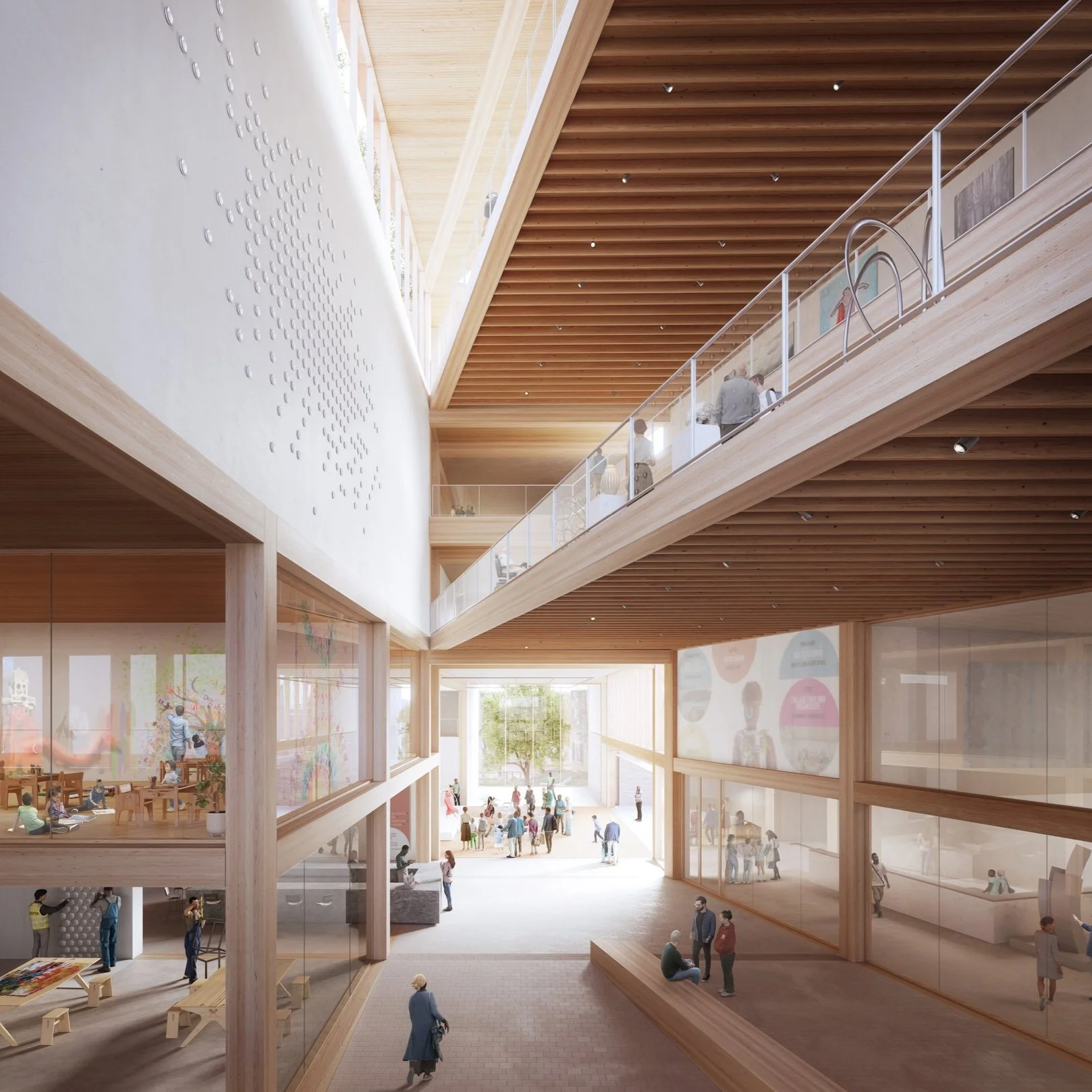














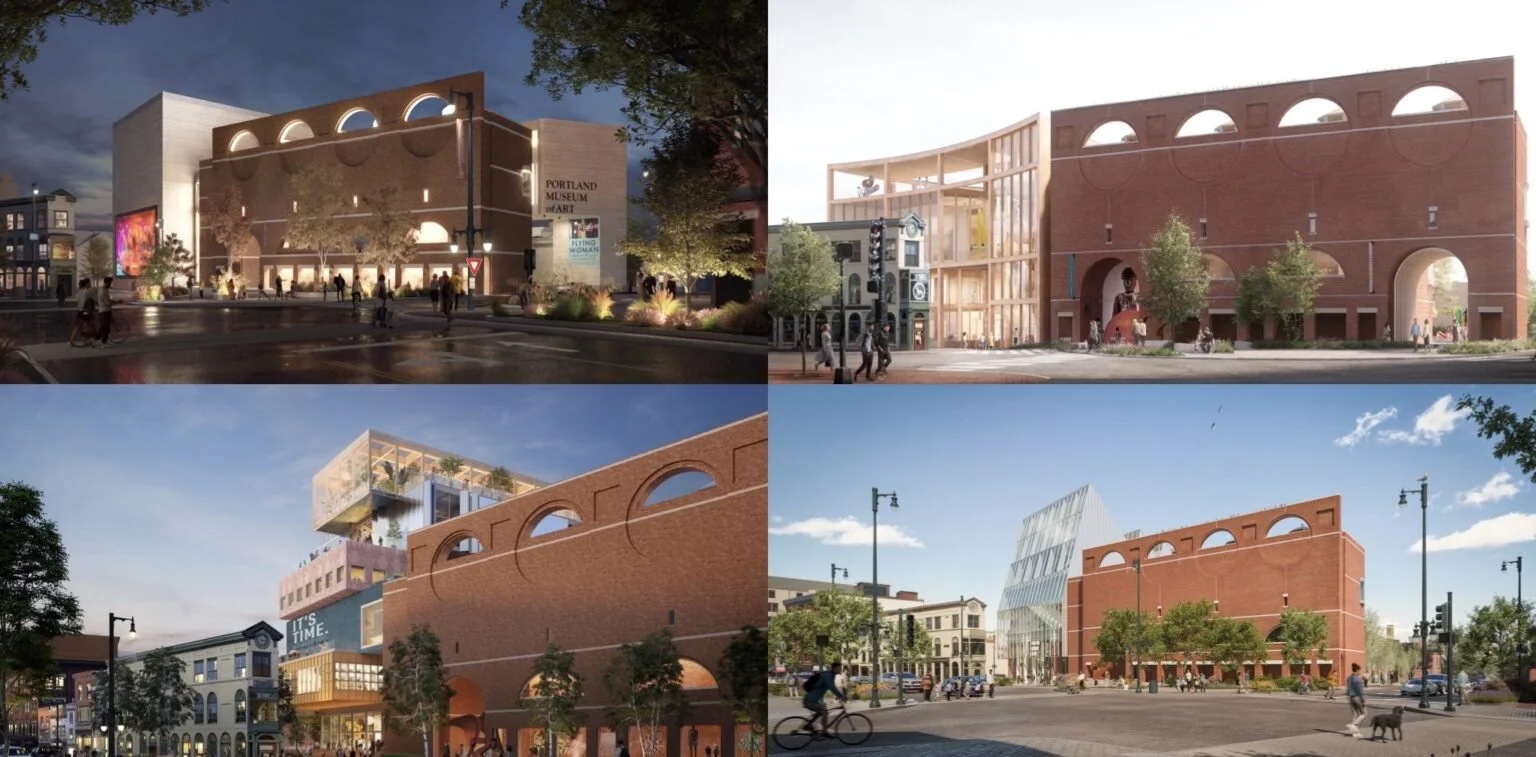
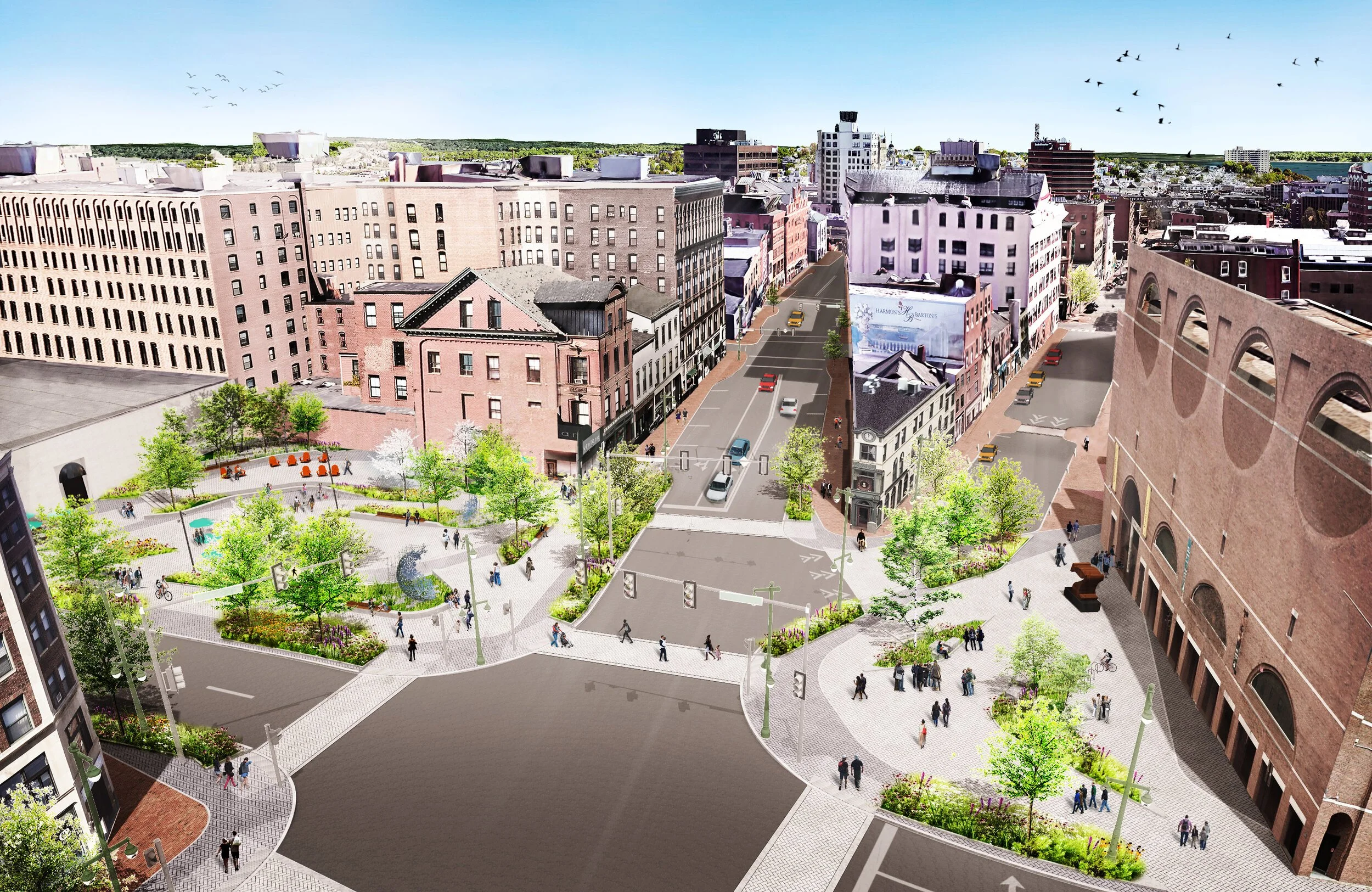

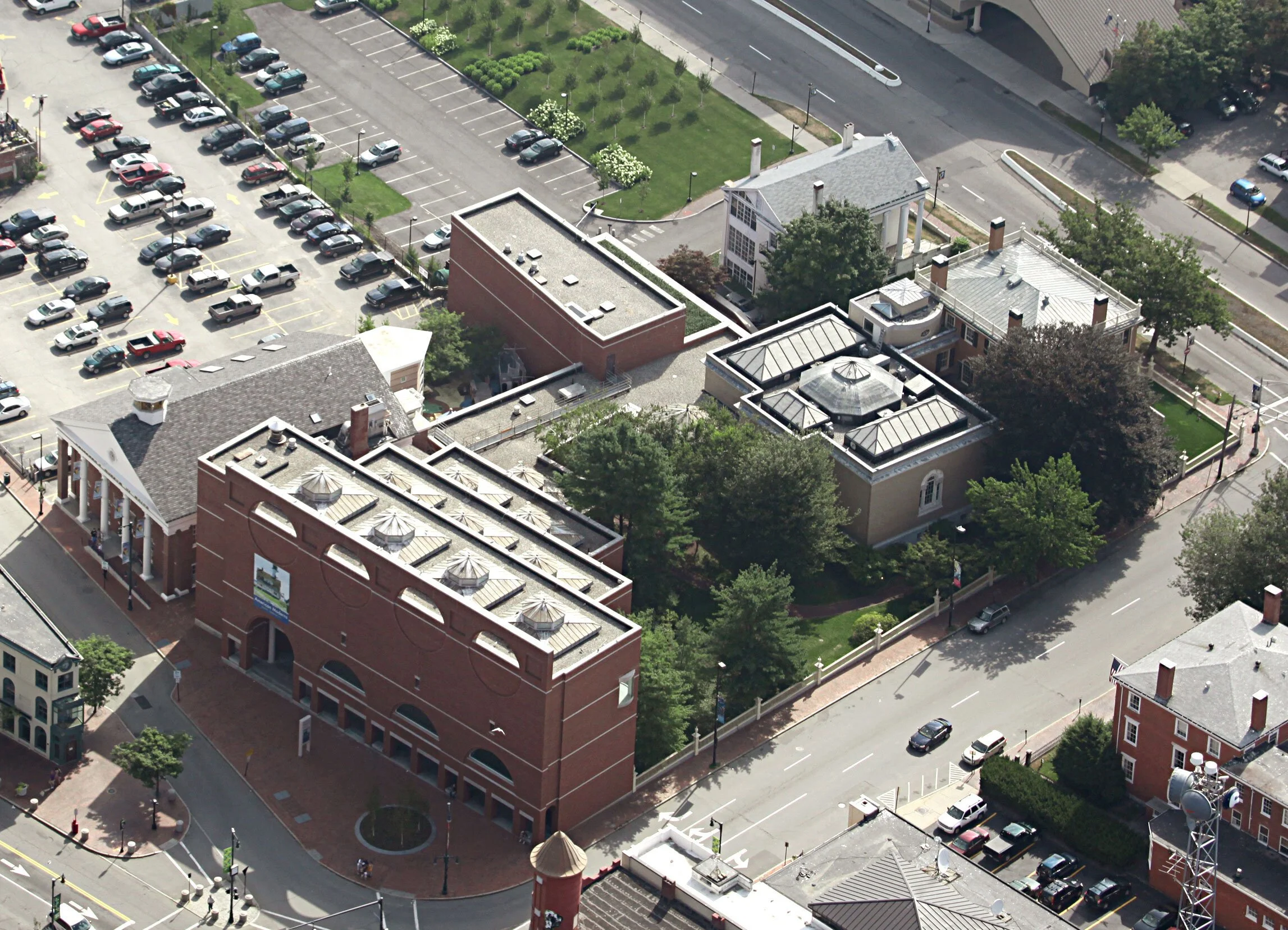





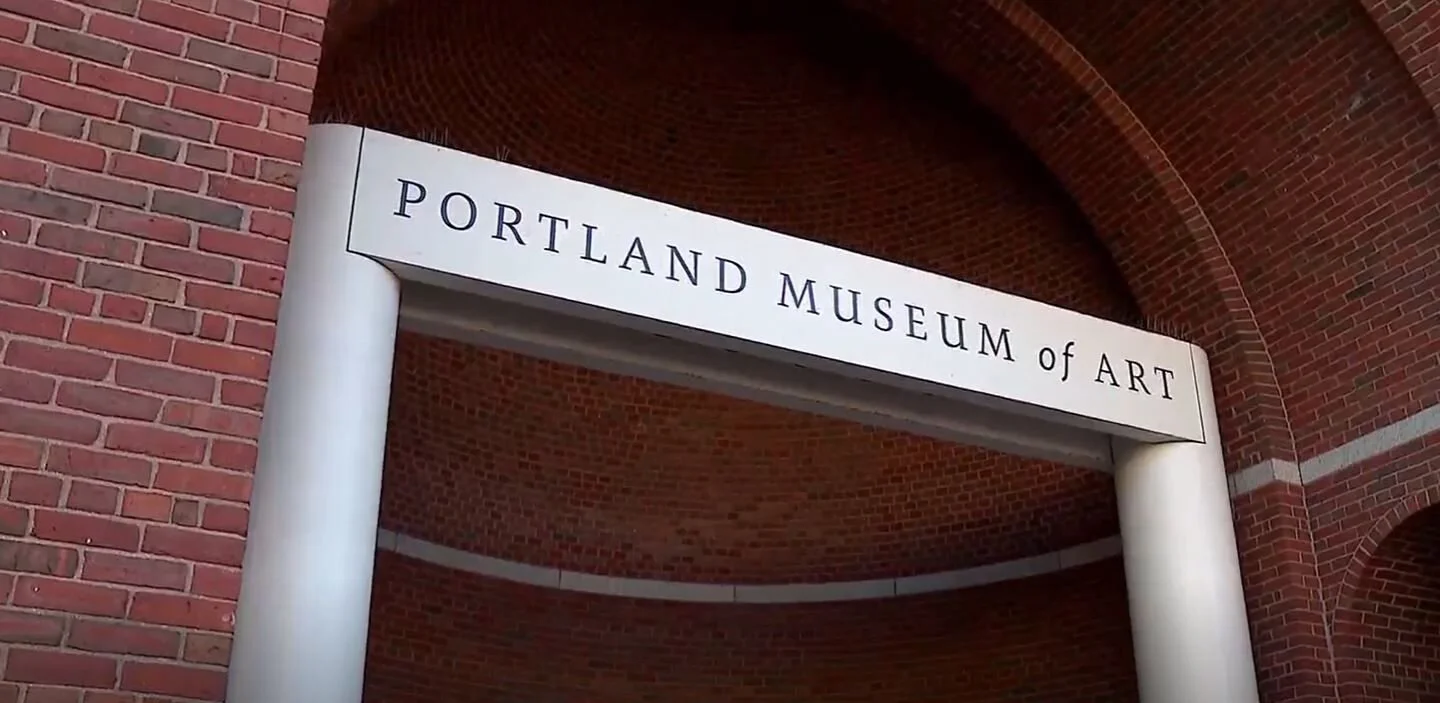

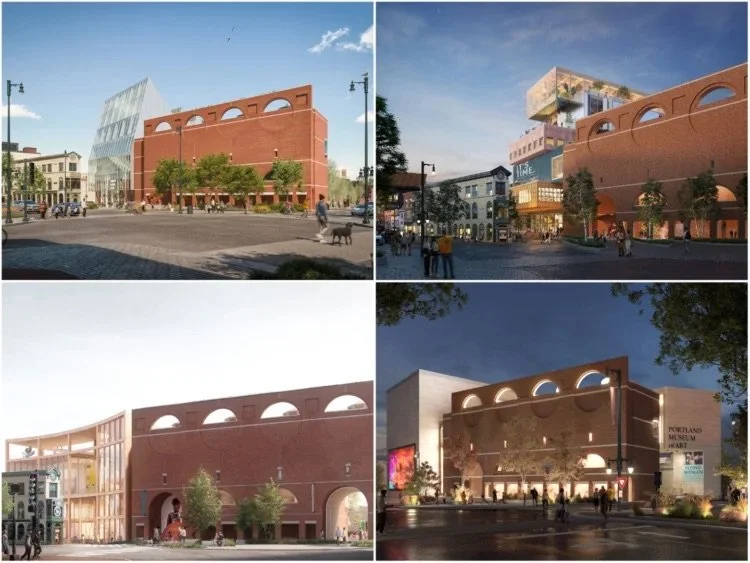


















![2021.02.04-PMA-Presentation-FINAL-short-[6]-(dragged).jpg](https://images.squarespace-cdn.com/content/v1/594bea6eccf210316877b8f2/1616618815086-5O8LHMIFT971YZMEXAO1/2021.02.04-PMA-Presentation-FINAL-short-%5B6%5D-%28dragged%29.jpg)



